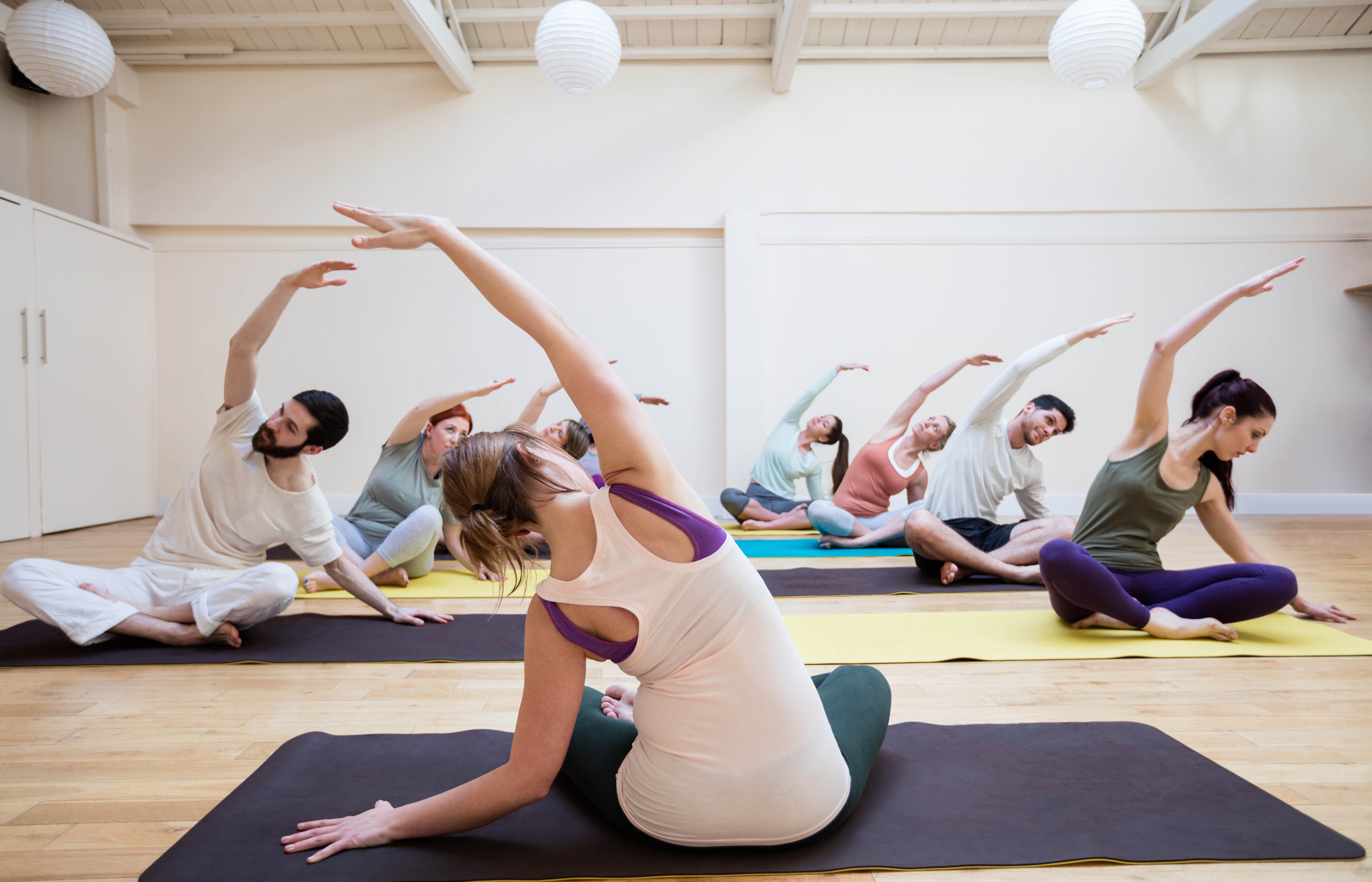
How to raise funds for a yoga centre?
Yoga is a group of physical, mental and spiritual practices or disciplines that originated in ancient India. It is the path that leads man to know himself. It helps him to make his body healthy and strong, and also frees it from any toxins and unnecessary substances that interfere with its functioning. The ultimate goal is moksha (liberation), though its exact form depends on the philosophical or theological stream of the school concerned. The process of yoga is an ascent to the purity of absolute perfection, which is the essential state of every human being. To attain it requires the establishment of a state of inner balance and harmony.
Various writers refer the emergence of yoga to the Indus Civilization (XXXIII-XX centuries BC), pre-Vedic East India, Vedic Age (XV-VI centuries BC) and the Sramana movement. Some researchers identify the image of the Pashupati Seal of the Indus Civilization as an asana from yoga, while others reject this interpretation as the speculative result of projecting "later practices onto archaeological finds." The sage Patanjali is considered to be the founder of the system, who framed it in his work Yoga Sutra on the already existing experience of individual yogis.
Types, practices and schools
There are four different branches of yoga: jnana yoga - of knowledge, karma yoga - of action, bhakti yoga - of cosmic love and raja yoga - royal yoga. The system has eight grades. Each successive degree is related to the preceding ones and prepares for the next. The degrees are grouped into three types: moral self-discipline, bodily self-discipline and mental self-discipline.
Outside India, yoga is mostly associated with the asanas (physical postures) and pranayama (conscious control of breath) in Hatha - of the body, of physical and mental health. All methods are based on the perfection of our personalities.
Asanas
Asanas are the postures, positions or exercises that are performed during the practice of yoga. They are used to strengthen and stretch. Yoga asana is a balance between effort and ease. It increases physical flexibility and expands the mind. By making the effort to stand in the pose and then relax, it brings that balance to every aspect of our lives. It teaches us to make an effort and then relax, to detach from the end result. Asanas strengthen the body, improve health and flexibility, and remove energy blockages and tension. When practicing asana, the emphasis is on awareness. As the student's experience deepens, more complex and difficult asanas are taught, combined with a particular way of breathing and specific concentration/visualization.
Hatha
Focuses on purification of the body as a means that leads to purification of the mind. It is the catalyst that awakens the two energies that guide life. This includes a system of individual health prophylaxis and comprehensive personal cultivation. The exercises are done at a slower pace and it is not necessary to follow the general pace of the group. Hatha yoga will teach you how to breathe, how and what poses to perform, give you the basic skills and knowledge of meditation and relaxation.
Nidra
Yoga nidra is deep relaxation. The point of this method is learning self-control of the mind and consciously entering the alpha state of consciousness. In order to achieve the impact, it is necessary to follow a precise structure in the conduct as well as the necessary specifics. It is practiced in the supine position and is often a favorite practice of yoga students. It contains a systematic relaxation of all levels of a person, namely from the physical to the mental. It charges with a sense of relaxation where the body and mind are asleep but awareness remains active. It can also be used to work with certain problems in life.
Kundalini
Kundalini dates back to 1969. It was introduced by Yogi Bhajan, and its practice includes yoga postures and meditation. The focus is mostly on chanting Mantras and Pranayama. The practice is designed to increase overall body awareness to prepare the body, nervous system and mind to handle the energy of kundalini ascension (a term for spiritual energy or life force located at the base of the spine). This energy is considered a primal force that represents the potential for spiritual awakening and transformation.
Fundraising to create a yoga centre
Setting up a yoga centre is extremely labour intensive. This has been witnessed by quite a number of teachers who dream of having their own centre. One of the most complicated tasks that quite often stands in the way is fundraising. We live in the digital age, which helps us with solving this problem. Crowdfunding makes fundraising easier and more convenient for every teacher. It can be a valuable tool for creating a hub, as it allows small amounts of money to be collected from many known and unknown people who become donors.
Don't waste any more time and start a campaign on PavelAndreev.ORG.
And here are some of the significant advantages of crowdfunding.
Funding the initial costs
Crowdfunding can help cover the initial start-up costs of your center. Such costs can be rent, equipment, utilities, and more. It is preferable to have a business plan in which you calculate these costs for future periods. For example: if you have to pay rent, calculate it for months ahead (half or one year). You can do the same with utility costs.
Minimising risks
Crowdfunding helps you try to raise the money you need, and you don't get stuck in debt. Even if you don't raise the full amount mentioned in the campaign, you don't lose out because you didn't take out loans and you didn't receive non-repayable funding. As you can guess, most funding from lending institutions comes with interest. It's important to note, for those first coming across this method, that crowdfunding has nothing to do with loans and interest.
Attracting attention to your project
Crowdfunding platforms often have large communities of users looking for campaigns to get involved in. By launching a crowdfunding campaign, you are not only raising money, but also drawing attention to your centre and cause. Some donors may get involved with the project in other ways. For example: they would initially donate certain funds and eventually become part of the community/your customers.
Focus on social responsibility
Many donors are attracted by the opportunity to support a project that improves their community or promotes a cause they believe in. By paying attention to your center's impact, you can appeal to these donors. In doing so, they will also engage with your campaign.
Networking and collaboration
The process of preparing for and implementing a crowdfunding campaign can help you work with people and organizations that share your interests and values. These connections can be helpful in planning, implementing, and growing your center.
Building community before opening
Engaging with supporters during a crowdfunding campaign can help build a community around your center before it even opens its doors. This upfront support is essential in getting your center up and running.
Long-term support and commitment
A crowdfunding campaign can also lead to long-term benefits. Examples include recurring donations, testimonials from donors and customers, the opportunity to build a wider community of supporters, and more.
Launching a fundraising campaign
Now that we've looked at some of the benefits of crowdfunding, it's time to turn our attention to the campaign. You can create a campaign on PavelAndreev.ORG, a specialized fundraising platform that has years of experience in managing and implementing crowdfunding campaigns. In order to make the campaign active, you need to follow the steps on the platform, starting with clicking the "Start Campaign" button. Everything happens in a matter of minutes.
The PavelAndreev.ORGplatform has an excellent reputation, thanks to which it has built trust, established its image and gathered together a huge audience that includes campaign creators and donors.
At PavelAndreev.ORG you will also find a number of features that present opportunities to make secure payments, share campaigns on social media, and track campaign progress in real time. The platform team provides support and assistance to all. Make your dream of owning your own yoga center come true by starting a campaign today.

What is the approximate cost of publishing a book?
If your main goal is simply to get your book printed, using free self-publishing platforms may be the right decision. The writing itself is the biggest reward for many people, and getting published may be just a formality. However, if you want to sell your book and reach a wide audience, you need to invest in professional services.Without them, it's hard to compete with traditionally published books. Factors such as professional editing, cover gr...

What is a philanthropist and philanthropy?
Everyone can be a philanthropist and be more effective in making a difference. Here's how. A philanthropist is a person who donates time, money, experience, skills or talent to help create a better world. Anyone can be a philanthropist, regardless of status or net worth. What is philanthropy? The Greek playwright Aeschylus coined the term philanthropy in the 5th century B.C. It meant "love of mankind." Today, philanthropy means generosity in a...

Narcistic Psychotic Disorder: Symptoms, Treatment and How We Can Help You
Mental health is increasingly important in society, and interest in this topic is growing significantly. Mental illness affects a huge number of people worldwide. One of the lesser known illnesses affecting mental health is narcissistic personality disorder. Narcissistic personality disorder is a condition that often goes undiagnosed, and this leads to even greater suffering for those affected. People with this mental condition have great diffic...

How to quickly raise money to adopt a child
Children are the greatest gift a person can receive throughout his life! And if fate has not been kind enough to ordain you to be a parent, institutions and organizations have found a way to give this right to anyone who has the heart and soul for it. According to statistics from surveys done in 2018, the figure of 430,000 children, works in plus towards foster families. For adopted children, a home and unconditional dedication and love is extre...

